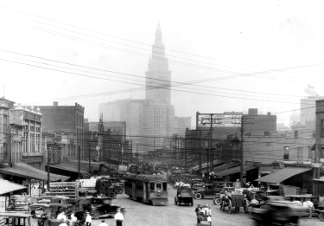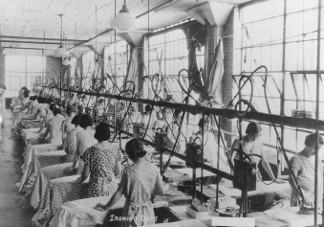HANKS, JARVIS FRARY (24 Sept. 1799-27 June 1853) played a pivotal role in introducing the arts of painting and music into pioneer Cleveland. A native of Pittsfield, N.Y., he survived the Battle of Chippewa as a drummer boy in the U.S. Army during the WAR OF 1812. Following the war, Hanks became an itinerant painter of everything from portraits to houses in such frontier communities as Charleston, Va. (later W. Va.), where he married Charlotte Garber. He studied portraiture with Thomas Sully in Philadelphia before working his way to Cleveland in 1825. Hanging out his shingle as a portrait, sign, and ornamental painter, Hanks stayed 2 years before going back to New York, where he exhibited at the National Academy of Design and attracted Cleveland's notice through his public renunciation of Masonry during the anti-Masonic movement. Hanks returned to Cleveland for good c. 1836. Although he advertised his desire to concentrate his talents on portraiture, he continued through the years to solicit commissions for signs and ornamental paintings. Among his portraits were likenesses of TRUMAN P. HANDY†, PETER WEDDELL†, and blacksmith Abraham Hickox. An accomplished fiddler as well, Hanks began giving vocal lessons by 1840 and in 1850 was appointed music director of the newly formed CLEVELAND MENDELSSOHN SOCIETY. He was also active civically, serving as secretary of the Cuyahoga County Total Abstinence Society (see TEMPERANCE) and participating in anti-slavery meetings and movements. The father of 10 children, he maintained a farm at DOAN'S CORNERS and is buried at WOODLAND CEMETERY.
Last Modified: 17 Jul 1997 11:42:21 AMGrant, Francis. "The Emergence of Cultural Patterns in a Great American City: Cleveland X: Jarvis F. Hanks," Fine Arts (1971).
- Related Article(s)









